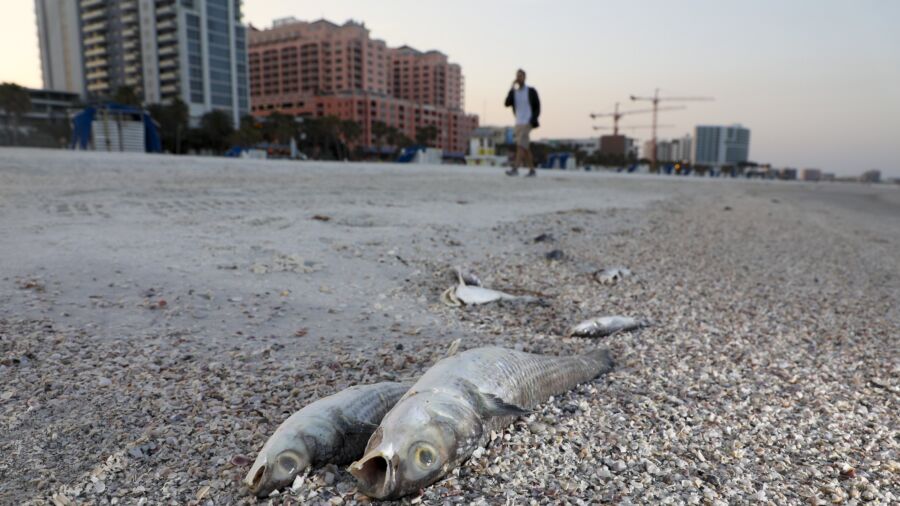Florida residents and visitors to local beaches have reported respiratory issues and burning eyes following an increased presence of red tide algae in the water.
The onset of the algae has caused dead fish to wash up on the shores. A beachside festival scheduled for next month has been canceled, raising concerns about any algae remaining on Florida’s coastline for an extended period after the algae started blooming last October.
The red tide is likely to continue until at least the middle of April. As a result, the annual BeachFest in the state’s Indian Rocks Beach, which a homeowner’s association sponsors, has been canceled, following advice from the city and the local health authority.
According to a public letter by the Indian Rocks Beach Homeowners Association, the red tide “is currently present on the beach and is forecasted to remain in the area in the weeks to come.”
“It is unfortunate that the festival had to be cancelled, but it is the best decision in the interest of public health,” the letter says.
According to county spokesperson Tony Fabrizio, the algae have caused an accumulation of a large amount of debris. Almost two tons were washed up at Pinellas County beaches before it was taken to the landfill. The majority of it was dead fish.
Mandy Edmunds, a city parks supervisor, told Tampa Bay Times that approximately 1,000 pounds of fish had been cleared from beaches in St. Pete Beach since the beginning of March.
A natural occurrence, red tide is a bloom of toxic algae (Karenia brevis) originating in the Gulf of Mexico. Its formation is exacerbated by nutrients in the water, including nitrogen.
The Florida Fish and Wildlife Conservation Commission has advised the public to avoid swimming in or around red tide waters. Exposure can lead to skin irritation, rashes, and burning and sore eyes. Those with respiratory issues have been advised to avoid beaches affected by the algae altogether.
The Commission has tested waters along Florida’s Gulf Coast, with over 150 samples showing the presence of red tide. The highest concentrations were found along the counties of Pinellas and Sarasota.
According to Bob Weisberg, a former director of the University of South Florida’s Ocean Circulation Lab, the red tide may be around for a while.
“I cannot say when it’s going to go away. It could very well be that this thing may linger,” he told the Tampa Bay Times.

